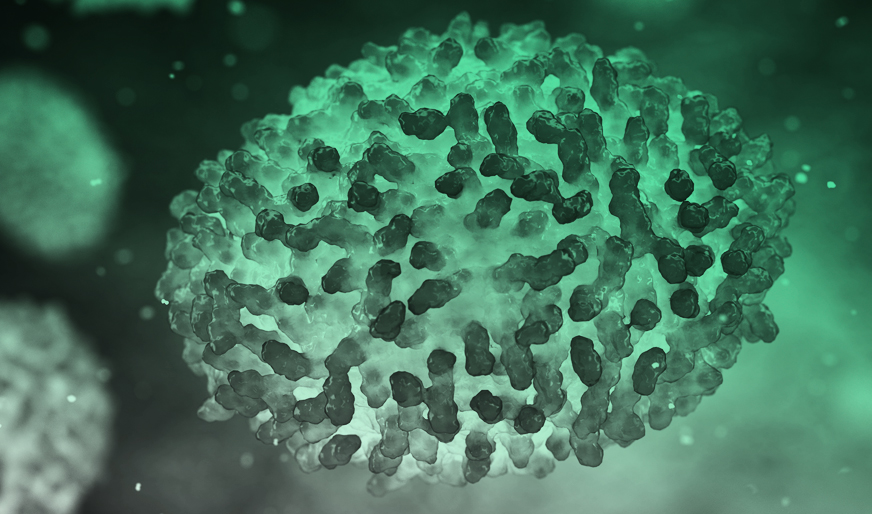Since the start of the monkeypox outbreak in 2022, based on CDC data issued on 02 Sep 2022, more than 53 027 outbreaks worldwide have been reported on September 2nd 2022 – many of them in non-endemic countries in Europe and North America.
- More than 16.750 confirmed cases from 29 EU/EEA countries
- 19.961 from the US
Monkeypox –
General Information
Monkeypox is a viral zoonosis, i.e. an infectious disease of humans which is transmitted to humans from animals. The virus is a double-stranded DNA enveloped virus, and the hosts include a range of rodents and non-human primates. Transmission can take place:
- from animal-to-human: through direct contact with blood, bodily fluids, or with wounds of the skin or the mucous membrane of infected animals
- human-to-human: through direct contact to skin lesions or a close contact with an infected person over respiratory secretions (meaning a long face-to-face contact). At this time, data suggest that some sexual relationships make up the majority of cases in the current monkeypox outbreak. However, anyone, regardless of sexual orientation or gender identity, who has been in close, personal contact with someone who has monkeypox is at risk.
- via touching contaminated surfaces that have been used by someone with monkeypox: objects, equipment, material, fabrics (clothing, bedding, or towels) etc. in touch with an infected person.
Historically occurring in tropical rainforest areas of Central and West Africa, some cases of Monkeypox were reported outside of Africa since 2003. Two distinct clades of the monkeypox virus exist – the Central African clade (Congo Basin), causing more severe disease and expected to be transmitted easier, and the West African clade.
Lately, more cases of monkeypox were identified worldwide in several non-endemic countries. Extra investigations are running to get further information on sources of infection and transmission and the epidemiology.

FACT & FIGURES ON MONKEYPOX
Basic background information:
- Incubation period: Usually between 6 to 13 days but can range from 5 to 21 days from infection to first symptoms. A person is not contagious during this period.
- Human-to-human Transmission: Only by symptomatic individuals through direct or indirect contact. A person with monkeypox can spread it to others from the time symptoms start until the rash has fully healed and a fresh layer of skin has formed.
- Symptoms: can be divided into 2 periods
- the invasion period (lasts 0–5 days): characterized by fever, intense headache, swollen lymph nodes, back pain, muscle aches and lack of energy.
- the skin eruption (1–3 days after the start of the fever): rash on the face and extremities, oral mucous membranes, genitalia, conjunctivae, and the cornea. The rash develops from macules to papules, vesicles, pustules and crusts which dry up and finally fall off.
- Duration: self-limited disease, symptoms lasting from 2 to 4 weeks
- Fatality Rate: around 3-6% in recent times
- Smallpox vs Monkeypox: In 1980 WHO declared smallpox eradicated – making it the only human disease to be eradicated. Nowadays routine smallpox vaccination is no longer performed on the general public. Even though the clinical presentation of Monkeypox resembles that of smallpox, a related orthopoxvirus infection, Monkeypox is less contagious than smallpox and causes less severe illness.
- Vaccination: Smallpox vaccins also provide protection against monkeypox (85%). Nonetheless, the younger generations (< 40-50 years, depending on country) are no longer vaccinated against smallpox. Newer vaccines approved for prevention of monkeypox exist.
- Medication: Treatment is mainly symptomatic and supportive to avoid a secondary bacterial infection. Antivirals, such as tecovirimat (TPOXX) which has been approved by EMA (European Medicines Agency) in 2022 – even though not yet widely available.
Monkeypox – Prevention
The main measurements to control Monkeypox and the prevention of the spread of the disease is the education of the people. Increased attention and awareness to early signs – since only symptomatic individuals transmit the disease – lead to a rapid detection and to a potential stop the transmission.
When traveling in areas of higher risk of Monkeypox, make sure
- to watch out for early signs and avoid close contact with people having a rash or other related symptoms
- to follow standard personal hygiene procedures such as hand washing and hand disinfection with a virucidal hand disinfectant
- avoid contact to sick and dead animals
- only eat thoroughly cooked meat
When a person in your surrounding is expected to face a monkeypox infection, it is essential to isolate the person as much as possible and to follow strict hygiene procedures:
- to wear personal protective equipment (PPE) such as face masks and disposable gloves whenever being in contact with materials and equipment in contact with the infected person
- to follow standard personal hygiene procedures such as hand washing and hand disinfection with a virucidal hand disinfectant
- thoroughly and frequently clean and disinfect the surfaces of equipment (medical, food preparation, glasses, etc.) and the surrounding (handles, railings, light switches, door handles) – make sure to only use appropriate virucidal disinfectants with a confirmed efficacy against enveloped viruses and to apply them properly as explained on the label or product information.
- People in charge of hygiene measures (cleaning and waste management) should always wear a disposable water-resistant gown, disposable gloves, respiratory protection (FFP2 masks), eye splash protection (goggles or visor) and footwear that can be disinfected with appropriate disinfectants
On a farm there are many ways of contamination – external and internal sources might be responsible for an outbreak of a disease. It is essential to check your premises, your work flow structures and your biosecurity program to detect weak spots and adjust accordingly
Strict biosecurity measures and good hygiene practices are essential in protecting against a disease outbreaks and a spreading of this contagious disease.
References:
More detailed information can be found on the website of the
- WHO (World Health Organization): https://www.who.int/news-room/fact-sheets/detail/monkeypox
- ECDC (European Centre for Disease Prevention and Control): https://www.ecdc.europa.eu/sites/default/files/documents/Monkeypox-infection-prevention-and-control-guidance.pdf
- Centre of Disease and Prevention https://www.cdc.gov/poxvirus/monkeypox/response/2022/index.html



